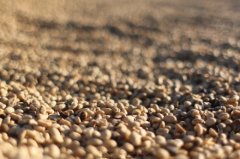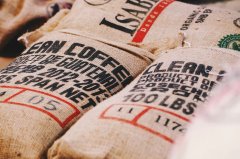Cultivation techniques of small Coffee Irrigation and fertilization of Coffee trees

irrigation
Coffee planting areas in Yunnan Province can be divided into rainy season and dry season. Irrigation in the dry season, especially in the flowering period, can ensure the normal growth and flowering of coffee plants, improve the fertility rate, and achieve high yield.
Fertilizer application
Fertilization is one of the key measures to achieve high yield of cultivated coffee. According to data, for every kilogram of dried beans harvested, coffee trees absorb 70 grams of nitrogen (equivalent to 600 grams of ammonium sulfate), 14 grams of phosphorus (equivalent to 110 grams of calcium superphosphate) and 76 grams of potassium (equivalent to 200 grams of potassium chloride) from the soil. The amount of fertilizer needed is not much, but coffee trees have to grow a large number of branches and leaves, stems and roots every year, which consume a lot of nutrients. There are shade tree absorption and soil fixation, soil erosion and so on also need to consume some fertilizer. Therefore, the fertilization of coffee is very important.
After planting, ① was fertilized combined with plastic surgery.
The fertilization of young coffee trees is mainly nitrogen fertilizer, while appropriate application of phosphorus and potassium fertilizer. Human and animal manure and green leaf retting fertilizer also have a good effect on the growth of young coffee trees. Coffee seedlings can be fertilized for the first time two months after planting, and then once every 1-2 months. If applying human and animal feces and urine, it should be retted and used after being diluted with water in the proportion of 1 ∶ 3, 5 kg per plant, water and fertilizer had better be applied in dry season, ammonium sulfate can be added to retting fertilizer, and 150 grams of ammonium sulfate can be mixed with each load of retting fertilizer. Chemical fertilizer (nitrogen, potash fertilizer) can also be applied in a shallow trench 15 cm outside the canopy after rain, 15-25 grams per plant. The principle of frequent and thin application should be grasped in the fertilization of young coffee.
Coffee trees were fertilized during the fruiting period of ②.
In the case of better management, the coffee began to bear fruit in the third year after planting. The fertilization of adult coffee fruit trees should be mainly nitrogen and potassium fertilizer, and properly combined with phosphorus fertilizer and other elements. The effect of applying potash fertilizer from July to August is the best. Fruit trees are generally fertilized five times a year, once in February to March (flowering stage), April to May (young fruit stage), July to September (fruit filling period), October to November and December to January of the following year. The annual application of organic fertilizer or compost is 1520kg, urea 250g 500g, calcium superphosphate 150g 500g, calcium superphosphate 150g 250g, potassium chloride 150g 200g.
Important Notice :
前街咖啡 FrontStreet Coffee has moved to new addredd:
FrontStreet Coffee Address: 315,Donghua East Road,GuangZhou
Tel:020 38364473
- Prev

Cultivation techniques of small Coffee in Yunnan Province Pest Control of Coffee trees
1. Coffee tiger, longicorn beetle. The coffee tiger longicorn beetle harms the coffee trunk for more than 2 years. At first, it eats between the cambium and xylem, and then eats the xylem. It has a great effect on coffee, the light ones make the plants yellow, withered branches and fruit drop, and the serious ones die of the whole plant. At the initial stage of the damage, there was no obvious hole in the appearance, but only slightly raised in the epidermis of the injured area. Prevention and control methods: strengthening the management of ①
- Next

Cultivation techniques of small-grain coffee soil management of coffee cultivation
Weeding, covering the young coffee garden, weeds are easy to breed, especially in the rainy season, weeding should be done once a month. If the labor force is sufficient, clean the grass should be removed first. Adult coffee garden can be weeded once every 2 to 3 months. If you use herbicides, you should be careful not to spray on the branches and leaves of coffee, and it is more important and prudent to use them in young coffee gardens. Coffee has shallow roots and is vulnerable to adverse climatic conditions such as high temperature and drought.
Related
- Detailed explanation of Jadeite planting Land in Panamanian Jadeite Manor introduction to the grading system of Jadeite competitive bidding, Red bid, Green bid and Rose Summer
- Story of Coffee planting in Brenka region of Costa Rica Stonehenge Manor anaerobic heavy honey treatment of flavor mouth
- What's on the barrel of Blue Mountain Coffee beans?
- Can American coffee also pull flowers? How to use hot American style to pull out a good-looking pattern?
- Can you make a cold extract with coffee beans? What is the right proportion for cold-extracted coffee formula?
- Indonesian PWN Gold Mandrine Coffee Origin Features Flavor How to Chong? Mandolin coffee is American.
- A brief introduction to the flavor characteristics of Brazilian yellow bourbon coffee beans
- What is the effect of different water quality on the flavor of cold-extracted coffee? What kind of water is best for brewing coffee?
- Why do you think of Rose Summer whenever you mention Panamanian coffee?
- Introduction to the characteristics of authentic blue mountain coffee bean producing areas? What is the CIB Coffee Authority in Jamaica?

